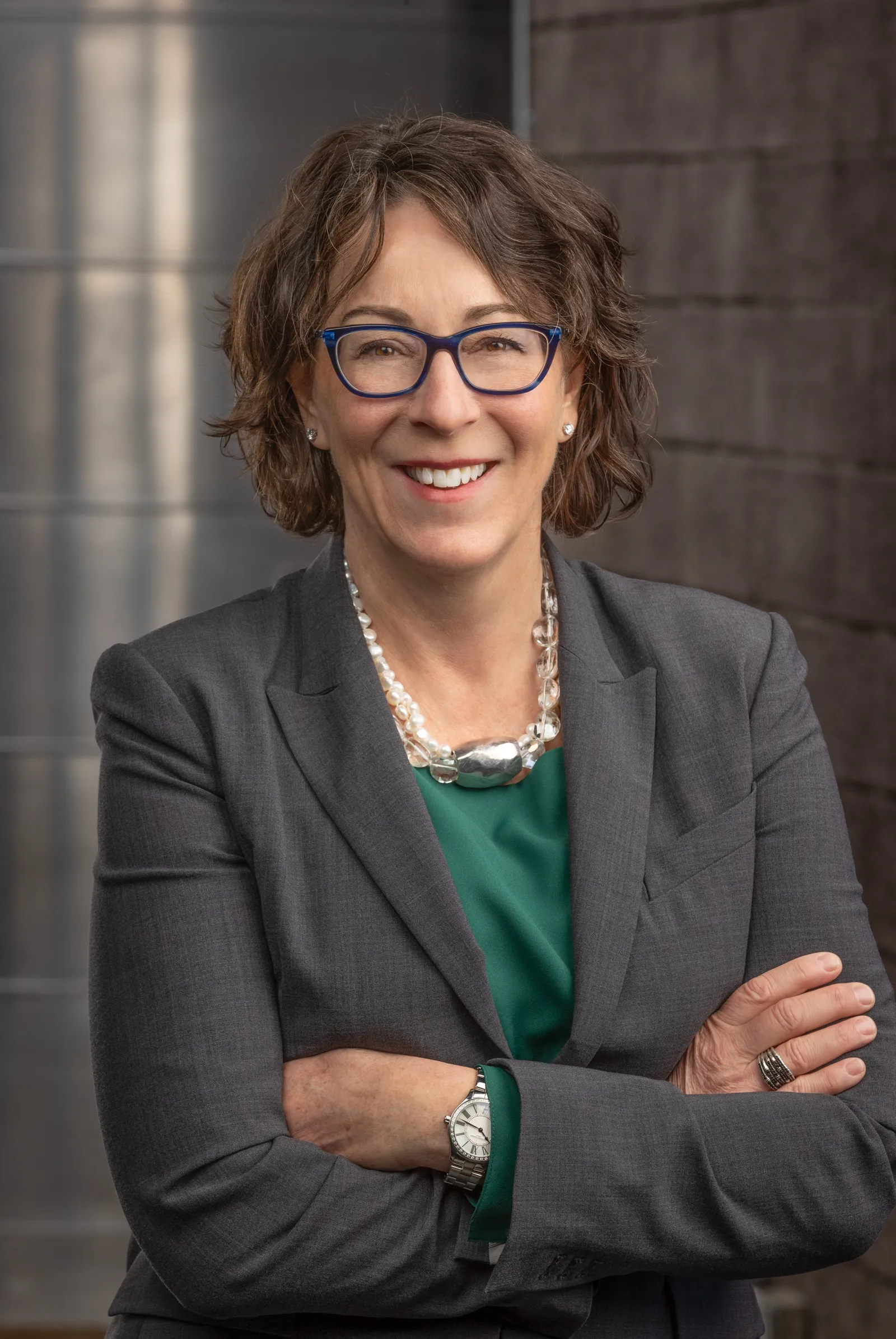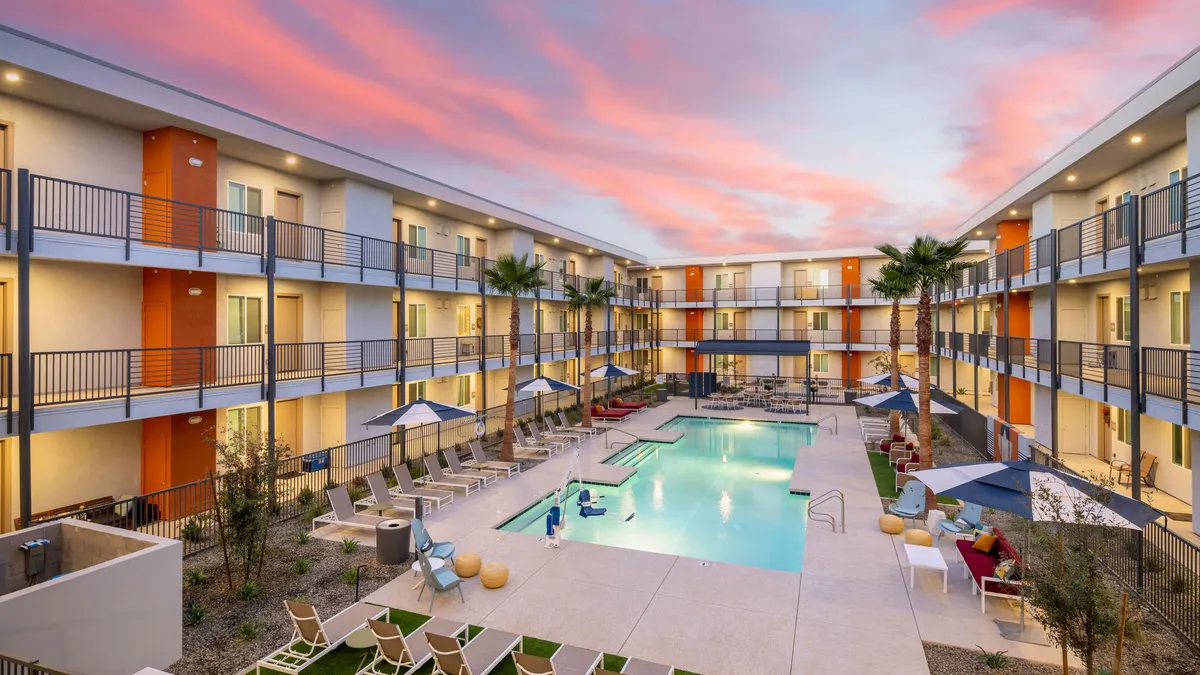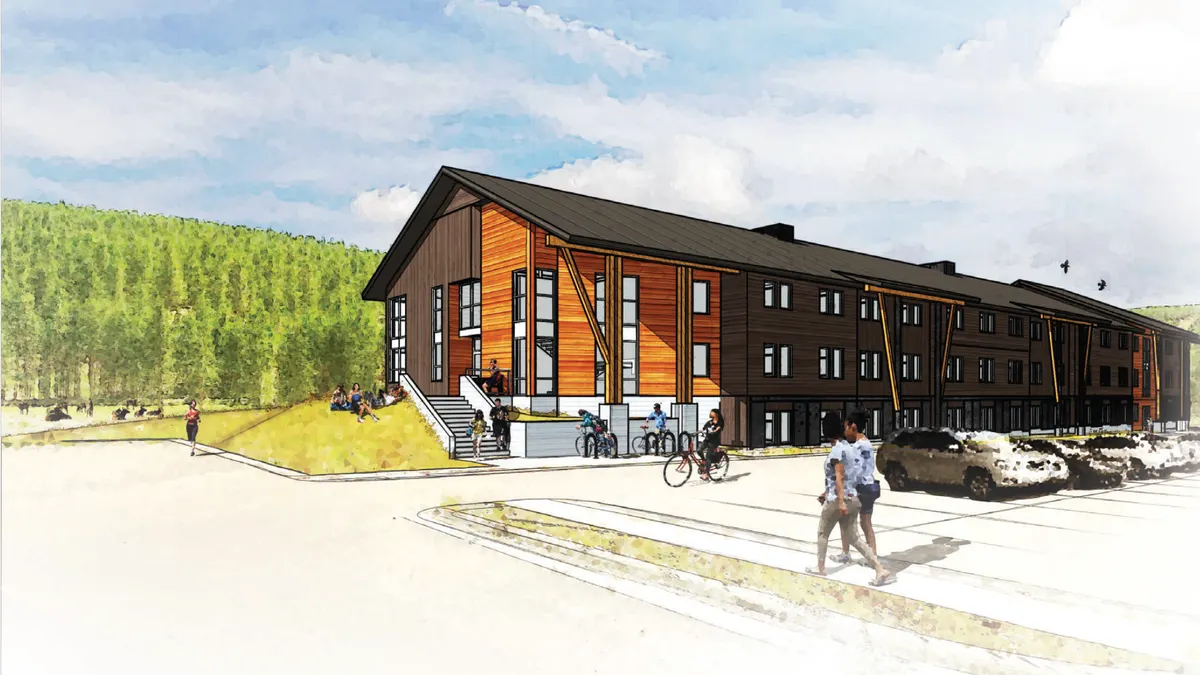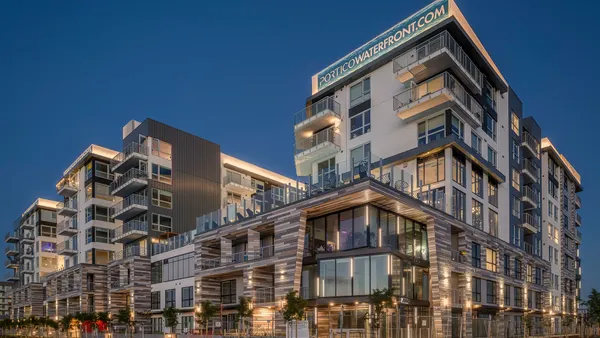Like many people, Pat Watts, Dan Richards and Rob Lyles saw a void in the housing market — a lack of housing for people making between 60% and 120% of area median income.
Unlike many people, the trio — who have been in the housing and general contracting business since 1996 — have made an effort to solve the problem by cutting waste and hiring construction crews directly.
Five years ago, they founded Scottsdale, Arizona-based Greenlight Communities to build workforce housing without government subsidies in the state. They’ve grown the company from six to 40 people and built 1,383 units in that time.
“We bought the land, entitled it, leased it up and took it through the sale,” Watts told Multifamily Dive.
Greenlight launched its Cabana brand apartments with an average unit size of 640 square feet and an average monthly rent of $1,585 to give workers making 80% to 120% of AMI a rental option. This fall, it will introduce a new line of apartment properties, dubbed the Streamliner, with an average unit size of 569 square feet and an average monthly rent of $1,250. It offers studio and one- and two-bedroom options with both lines.
Here, Watts talks with Multifamily Dive about building and designing more efficiently, the savings that can be found in smaller unit sizes and plans for further expansion.
This interview has been edited for brevity and clarity.
MULTIFAMILY DIVE: How did you go about cutting the cost of constructing apartments?
PAT WATTS: We just started with a blank piece of paper. What would we build? We would build a three-story wood frame because it's fundamentally the most efficient to build — without a podium and without structured parking because that starts to make it more expensive. We would also build units that stack vertically — very efficient floor plans and efficient building modules. You just do the same thing over and over again. We would avoid the multiple building types and floor plan types.

Then we looked at the amenities and asked what residents need and want to pay for — and what they would forego to be able to afford the rent. We didn't over-amentitize. We don't deliver the class-A project amenities, like the huge clubhouses, the wine stores and the climbing walls. We have amenities that fit the space that we're building. So we have a pool, outdoor fitness, indoor fitness, co-working and social spaces, but none of the over-the-top amenities.
We took that fundamental concept and worked with architects and engineers on value engineering.
Tell me about the next iteration of your attainable housing platform — your Streamliner brand.
We developed an even more efficient building module that we're calling Streamliner. We're breaking ground on the first two projects in Phoenix — 250 units each — next month. The units are slightly smaller, but they're not micro units, and they will be back-to-back units. It's a different building configuration, which allows even more efficiency. We're just able to reduce a little bit more in every aspect of it to deliver something less expensive.
How does reducing unit size help?
Reducing unit size helps with a certain percentage of construction costs. You need less flooring and less drywall, but you don't save on things like kitchens and bathrooms. They're the same size with the same things. It also makes the units much more energy efficient, especially in Arizona, where it's so hot in the summer. Tenants do see savings when they're not cooling big spaces they don't use.
How are you finding efficiencies in the construction process?
We think the most efficient way for a developer to build attainable housing is to build it themselves. By hiring a third-party general contractor, there is an extra layer of administration. You need two project managers, an extra layer of personnel, an extra layer of accounting and an extra layer of profit. By being our own general contractor, we've eliminated that duplication through the process. It was important to us to be able to do that.
Do you plan to take this beyond Arizona?
We are hoping to. We know the need for attainable rental housing isn't just localized to Phoenix — it's across the U.S. So we're hoping that when we have everything on the ground in Arizona going the way it needs to go, we're going to be able to expand — primarily in the Southwest.
How has the resident response been?
It has been excellent. The five buildings we have leased up have been leasing at about 40 units per month, which is fantastic.
Click here to sign up to receive multifamily and apartment news like this article in your inbox every weekday.









